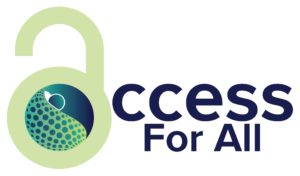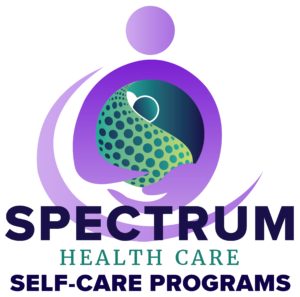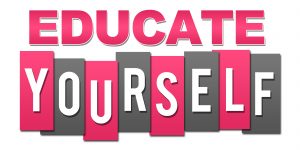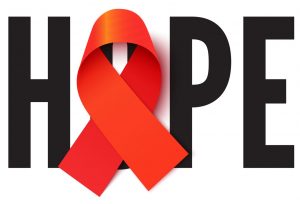 Today, US businesses spend an estimated 511 billion dollars each year on research and development. Why such a significant investment? Simple, they must know what we want so they can sell it to us. But in the world of nonprofits, we have a much more daunting task: we must collect data that tells us what services people need and then find the funding for it, and we do not have the luxury of 511 billion dollars’ worth of research to build our conclusions on.
Today, US businesses spend an estimated 511 billion dollars each year on research and development. Why such a significant investment? Simple, they must know what we want so they can sell it to us. But in the world of nonprofits, we have a much more daunting task: we must collect data that tells us what services people need and then find the funding for it, and we do not have the luxury of 511 billion dollars’ worth of research to build our conclusions on.
So why bring this up? Why now, at the end of a historically difficult year for so many? Well, dear reader, the answers to these questions have been forming in my rather pandemic response, idled brain. I bring this up because Spectrum Health Care, like so many other nonprofits, finds itself trying to figure out what the people we serve will need in the next one, five, and even ten years. We are required to become a modern prognosticator of sorts. We must look at all the inequities that we have been pushed to the front of the line and try to plan and fund projects that will address these issues. But there is a catch; we are assuming that we know and understand what those inequities are.
With that said, and understanding that we do not have billions of dollars of research to draw from, I will try to outline where we are headed and why we believe that to be the best course of action.
These priorities are presented in no specific order, and one program carries no more weight than another; these are all priorities that are critical to our mission.
Priority A: Expanded Access to Health Care
 Five years ago, we embarked on a project, Access for All, to expand access to healthcare and other services in our 37-county region. What we learned from the project is that our original assumption was, in fact, wrong. We believed that people did not engage in care because it was too burdensome to travel to the care delivery site; be it primary medicine, mental health, or dental care. After 2 years of client feedback and agency research, we now understand it is predominantly cost that is the primary factor in the delivery of care. People know where to seek out necessary medical services (and there are far more options to do than we initially thought) but time and time again our clients report that the main reason to avoid getting care is the overwhelming burden of cost.
Five years ago, we embarked on a project, Access for All, to expand access to healthcare and other services in our 37-county region. What we learned from the project is that our original assumption was, in fact, wrong. We believed that people did not engage in care because it was too burdensome to travel to the care delivery site; be it primary medicine, mental health, or dental care. After 2 years of client feedback and agency research, we now understand it is predominantly cost that is the primary factor in the delivery of care. People know where to seek out necessary medical services (and there are far more options to do than we initially thought) but time and time again our clients report that the main reason to avoid getting care is the overwhelming burden of cost.
So, what did we do? We set to work negotiating lower rates for care and making sure we could even cover some of that cost with our grant funding. That means that over 200 clients were able to get the care that they had deferred for far too long.
We now are looking at what is next for the program, and we believe that we must create a responsive plan that acts as the broker between the insurance companies and the care delivery sites. This has been done in other states with tremendous success. It drove down the cost of care for ALL parties. Our Access for All program will become vital in addressing this not only in our current region but expanding to address state-wide issues of affordability in healthcare. 2021 will be the start of this project, and many, many factors can change our path along the way, so for now, that is our plan.
Priority B: Expand Direct Care Options at SHC
 Three years ago, SHC took a leap of faith and opened a primary care clinic that offered specialized and culturally competent care options for the marginalized persons in our community. We started with our core competency of HIV care delivery. We knew that fewer and fewer providers in the region and the systems were beginning to have excessive wait times for appointments. In 2020, we added an additional care provider to our team to ensure that we were keeping up with demand and holding to our goal of getting people in to receive care within 7 days (that continues to be our goal). As we grew our patient total, we also saw the opportunity to offer more.
Three years ago, SHC took a leap of faith and opened a primary care clinic that offered specialized and culturally competent care options for the marginalized persons in our community. We started with our core competency of HIV care delivery. We knew that fewer and fewer providers in the region and the systems were beginning to have excessive wait times for appointments. In 2020, we added an additional care provider to our team to ensure that we were keeping up with demand and holding to our goal of getting people in to receive care within 7 days (that continues to be our goal). As we grew our patient total, we also saw the opportunity to offer more.
The first new program we offered Primary Care Behavioral Health (PCBH). This integrated approach to reaching the patients’ health goal was put into place to ensure that our patients get anticipated, and in some cases, better outcomes than planned. This part of our care delivery can address anything from managing stress to weight loss to really whatever you can think of. We also made sure that we had a robust referral system set up for people who might need more intense interventions that come out of this process.
We then realized that we had to create a whole new section of program offerings called Self-Care Programs. PCBH is part of that group in addition to Chronic Disease Self-Management and Positive Living with Chronic Conditions (both part of the Stanford Model) which helps those better manage their conditions and improve their health outcomes.
In 2021, we will complete the process of including the Trauma-Informed Care model and the Motivational Interview model of patient care. We see all this a strengthening our care delivery for better health outcomes.
Priority C: The Right Time
 In 2020 we joined The Right Time program implemented by the Missouri Family Health Council with a grant from The Missouri Foundation for Health. As a result of our inclusion in the program, we will offer family planning services that include, and maybe most importantly, access to free and reduced cost contraceptives methods. After a patient is presented with the medically accurate contraception education, as presented by one of our trained staff, they will be able to meet with our provider and receive the chosen method that day. It has taken us the better part of the year to get all the training done and get all the methods ordered, so we have them on site.
In 2020 we joined The Right Time program implemented by the Missouri Family Health Council with a grant from The Missouri Foundation for Health. As a result of our inclusion in the program, we will offer family planning services that include, and maybe most importantly, access to free and reduced cost contraceptives methods. After a patient is presented with the medically accurate contraception education, as presented by one of our trained staff, they will be able to meet with our provider and receive the chosen method that day. It has taken us the better part of the year to get all the training done and get all the methods ordered, so we have them on site.
In 2021, we anticipate providing services to 100+ persons who are looking for family planning and contraception options.
Where do we think this will take us? A new Women’s Health Program will address the needs of the women who reside in our coverage area. We know that the data shows that keeping women healthy is key to having stable homes and communities. To get a better understanding of what this program may look like, visit Show Me Healthy Women.
Priority D: Prevention Education & Testing
 Prevention Education and Testing is one of the true original programs, but it is also historically underfunded or even unfunded. Our current program is focused on safer sex education, practices, and testing components. In 2021 we will be incorporating additional health education components as an option for classes, talks, testing events, etc. Please see our site for education and testing information.
Prevention Education and Testing is one of the true original programs, but it is also historically underfunded or even unfunded. Our current program is focused on safer sex education, practices, and testing components. In 2021 we will be incorporating additional health education components as an option for classes, talks, testing events, etc. Please see our site for education and testing information.
We have worked for years to ensure that anyone can get tested for an STD/STI or HIV regardless of their ability to pay for the service. We will keep doing that work, and we will keep doing our presentations in High School classrooms and on College Campuses. It is important to work; it’s vital to work. COVID-19 dramatically affected STI rates globally. From March 2020 data, we saw the effects of lockdowns decreasing new cases, and the heels of that data, we started to see increases, not just globally but locally. We had to modify our testing programs, and we had to move our education to Zoom. As we get closer to having more of the population vaccinated, we will return to business as usual because we know it works.
We tested more than 2,500 people in 2019 through this program (additional testing through our clinic is counted separately); we will not even come close to that in 2020. 2021 remains to be seen. What we see new for this program is a new funding stream. In November of 2020, we applied to the CDC to increase our capacity to reach more people with more programming and more testing. We believe that this is one of the most robust applications we have ever submitted and are looking forward to having this as part of our programming.
Priority E: HIV Care & Programs
 In 2020, not only did all our lives change but so did our HIV programs. After 22 years, we have now moved to direct care delivery models rather than being a contracted intermediary. We wanted to ensure that our programs are modeled with the best service and outcomes possible; based on the most current care delivery systems. To accomplish this, we had to make some be shifts, but as HIV has been and always will be part of the agency’s core, we were willing, ready, and able. We ensured that our providers are well trained and up on the lasts care trends in HIV.
In 2020, not only did all our lives change but so did our HIV programs. After 22 years, we have now moved to direct care delivery models rather than being a contracted intermediary. We wanted to ensure that our programs are modeled with the best service and outcomes possible; based on the most current care delivery systems. To accomplish this, we had to make some be shifts, but as HIV has been and always will be part of the agency’s core, we were willing, ready, and able. We ensured that our providers are well trained and up on the lasts care trends in HIV.
We applied for and received a Ryan White Part C Capacity Building Grant to develop HIV-specific Chronic Disease Self-Management Programs so our PLWH’s could be in the driver’s seat of their care delivery. Again, we will apply for this funding in 2021 to bring more capacity to the system and expand the basics of the program offering, always with an eye toward best health outcomes for all our patients. As we look forward, we will always keep in mind the population’s specialized needs and work to bring the best programming to the central region.
Is Our Vision Clear?
 All of this will seem like a drop in the bucket in the world of health care, but for us, it is monumental; we have a staff of 14 who provide services to over 4,000 individuals each year. To say that our work isn’t impactful is selling the SHC staff’s efforts short; they all do amazing things daily. The SHC team will keep looking into our crystal ball and plan for what we see coming down the pike; we may get it right or not, but one thing is for sure we will keep trying our hardest to help people be the healthiest they can be.
All of this will seem like a drop in the bucket in the world of health care, but for us, it is monumental; we have a staff of 14 who provide services to over 4,000 individuals each year. To say that our work isn’t impactful is selling the SHC staff’s efforts short; they all do amazing things daily. The SHC team will keep looking into our crystal ball and plan for what we see coming down the pike; we may get it right or not, but one thing is for sure we will keep trying our hardest to help people be the healthiest they can be.
It. Is. What. We. Do.
As we close out 2020 and begin a new year, we wish you good health and great things in 2021! Stay tuned in to our website and social media to see all the ways Spectrum Health Care will change the world.
#BetterHealth #2021vision #future #SHCmo #SHCmission #yearend2020


Love the optimism and forward thinking!